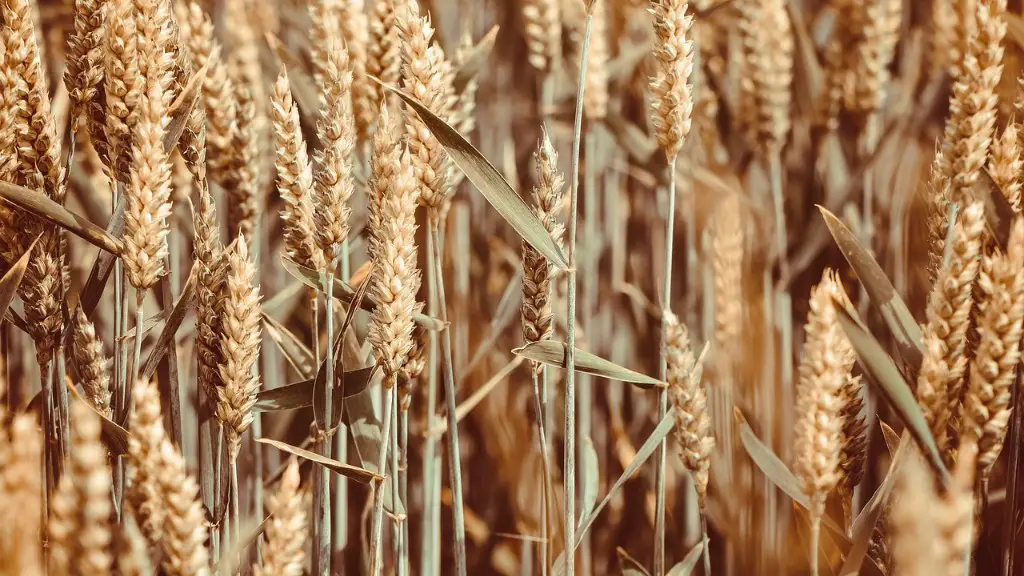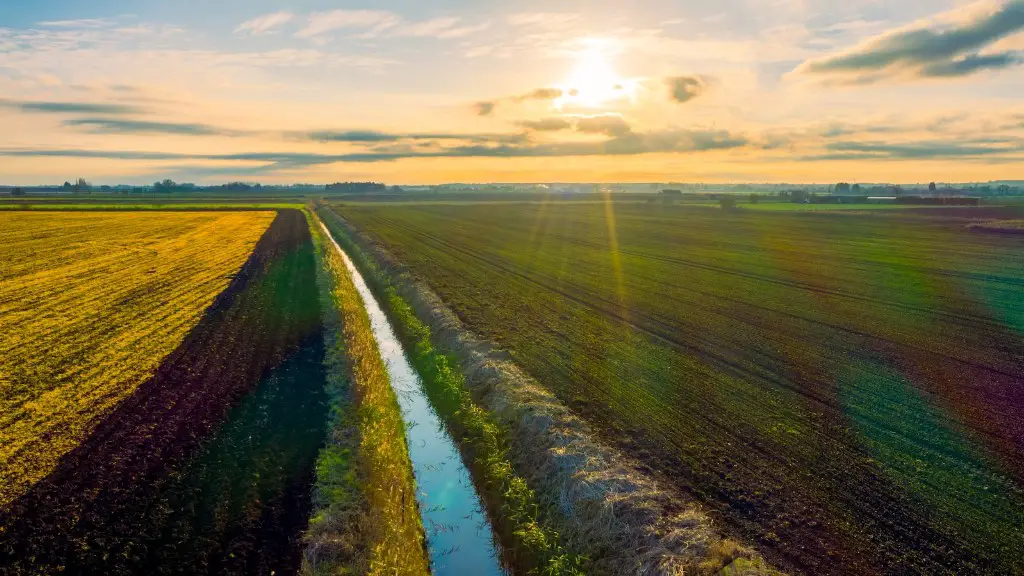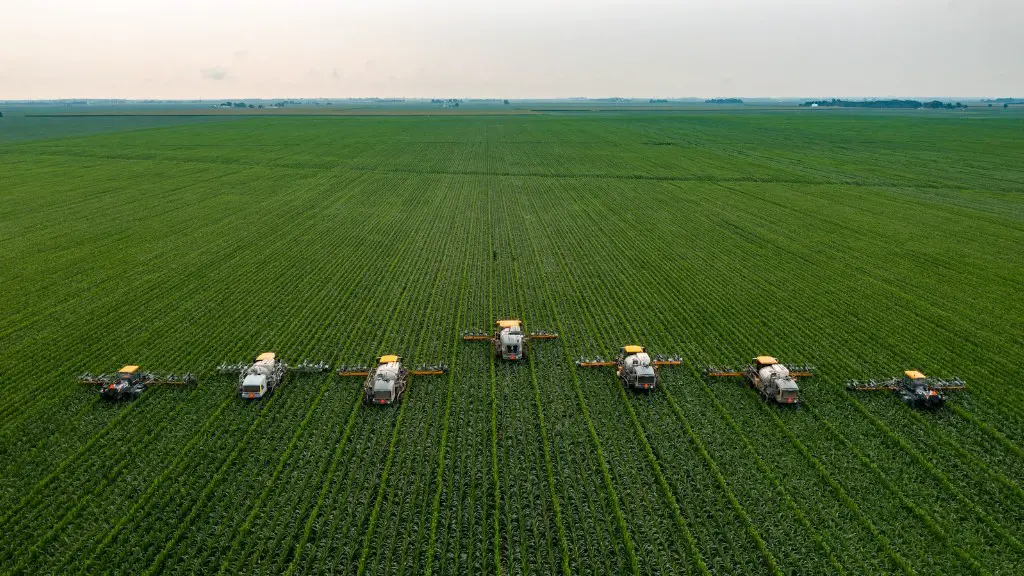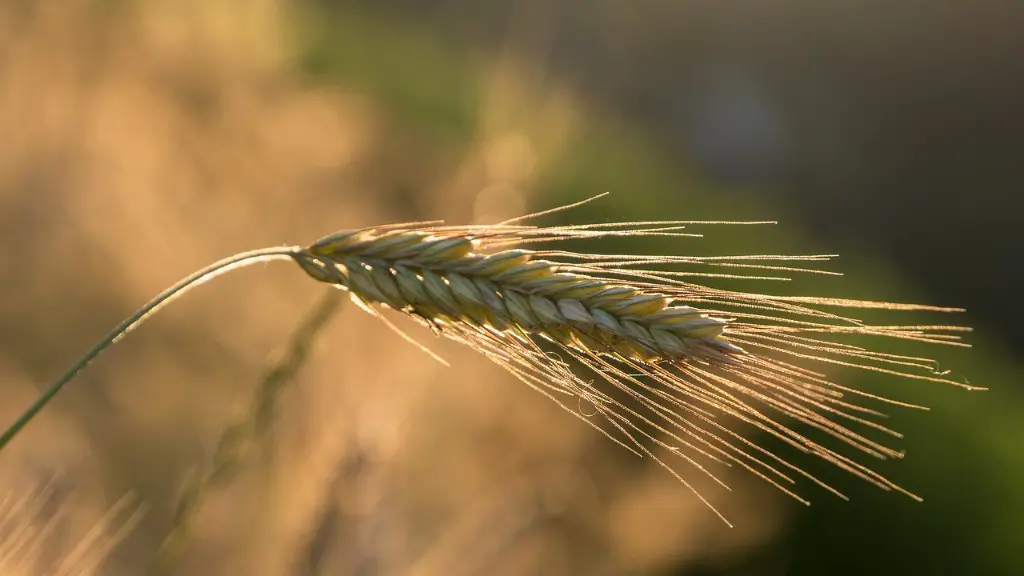Commercial agriculture is a type of farming characterized by large-scale production. It is most commonly associated with large-scale farms and corporate operations that are highly mechanized and that use technology and specialized production methods to increase yield. It is found in many parts of the world but is particularly prevalent in North and South America, Europe, the Middle East, and Asia. In the United States, for example, some of the most common types of commercial agriculture are corn, soybeans, wheat, and beef cattle production.
Commercial agriculture has been able to take advantage of advances in technology and genetics to yield more efficient and productive results and produce large amounts of crop and animal products for human consumption. Major advances like crop rotation, irrigation, and advanced fertilizer have enabled commercial farmers to cultivate large tracts of land and maximize their production. Additionally, advances in genetics have allowed farmers to create special breeds of animals and plants to increase yields, resist pests, and produce higher quality products. Technologies such as computers, sensors, and GPS have also been developed to help farmers manage large-scale operations.
The use of commercial agriculture is increasing around the world, as countries strive to increase food production to meet growing population demands and energy needs. For example, India, China, and Brazil have seen significant growth in commercial agriculture since the late 1990s. In the US, commercial agriculture is a major contributor to the US economy, accounting for about 10% of GDP and employing over a million people.
Across the world, commercial agriculture has faced criticism from environmentalists, who point to the potential environmental impacts from its large-scale, industrialized nature. Environmental activists have raised concerns about the use of chemical fertilizers and pesticides, the loss of biodiversity due to monocropping, and the potential effects of modern farming techniques on soil health. Despite these concerns, commercial agriculture remains a key component of many countries’ agricultural systems, providing a vital source of food, feed, and other products.
In conclusion, commercial agriculture has become an important part of the global food and feed systems and is a major contributor to many economies. It has enabled countries to increase food production and meet growing population demands. At the same time, it has raised concerns about the potential environmental impacts of its large-scale, industrialized nature, particularly the use of chemical fertilizers and pesticides, the loss of biodiversity, and the effects on soil health.
History of Commercial Agriculture
Commercial agriculture has a long history dating back to ancient times. Throughout history, farmers have used various techniques to maximize yields and create efficient production operations. Ancient farmers used crop rotation and irrigation to increase yields while later farmers utilized animals to help with tilling soils, fertilizing crops, and harvesting. More recently, advances in technology have led to further increases in yield, such as with the adoption of mechanical farming equipment in the early 20th century.
The history of commercial agriculture has been closely intertwined with the rise of corporations and the industrialization of the food system. In the 19th century, industrial production methods and processed foods became more commonplace, leading to increased mechanization and consolidation of farming operations. In recent decades, the introduction of GMOs, computerized crop management, and advances in genetics have led to further developments in commercial agriculture.
Today, commercial agriculture is a major contributor to global food production. It relies heavily on modern technologies and techniques to maximize yields and efficiency. In order for commercial agriculture to remain profitable, it must continually innovate and find new ways to increase efficiency.
Modern Trends in Commercial Agriculture
Commercial agriculture has continued to evolve over the past few decades, as farmers strive to maximize yields and efficiency. There has been a push towards larger and increasingly mechanized operations, as well as the use of modern technology and techniques such as crop rotation and irrigation. Additionally, the introduction of new genetics technologies and the growing use of GMOs have allowed commercial farmers to produce higher-yield, pest-resistant crops and livestock.
Furthermore, the increasing demand for organic and sustainably-produced foods has led to the growth of the local and organic food movement. This trend has resulted in the emergence of niche markets and the development of new ways to monetize these products. Additionally, the increasing demand for organic products has resulted in the emergence of organic certification systems, which seek to ensure that products meet certain standards of sustainability.
In addition, the use of data sciences and big data technologies has enabled commercial farmers to better manage their operations. For example, predictive analytics can be used to better understand crop yields or forecast weather patterns, enabling farmers to make more informed decisions about when to plant or harvest their crops. Additionally, artificial intelligence and automation can be used to optimize farm operations and reduce labor costs.
Impacts of Commercial Agriculture
Commercial agriculture has had a significant impact on the global food system. It has enabled farmers to produce large amounts of food, feed, and other products with greater efficiency and at a lower cost than traditional farming methods. Additionally, the use of technology and genetics has enabled commercial farmers to produce higher-yield, pest-resistant crops and livestock. This has contributed to increased food production and the ability to meet growing population demands.
On the other hand, commercial agriculture has also raised some concerns. There has been an increase in the use of synthetic fertilizers, pesticides, and other chemicals in commercial agriculture, which has raised concerns about environmental health. Additionally, there has been a move towards monocropping, resulting in the loss of biodiversity and potential soil health degradation. Finally, the use of modern technologies and genetic modification has also raised ethical and safety concerns.
Future of Commercial Agriculture
Looking ahead, commercial agriculture will continue to be an important part of the global food system. It is expected that advances in technology and genetics will further increase yields, and the use of big data and predictive analytics will help farmers optimize their operations. Additionally, there will likely be an increased focus on organic and sustainably-produced foods, as well as the development of certification systems and related regulations.
Commercial agriculture will also increasingly rely on automation and robotics. In the future, more of the labor associated with farming operations and food production will be handled by robotic systems, reducing labor costs and making food production more efficient. Finally, as the climate crisis deepens, farmers will need to find ways to adapt their practices to cope with increasingly extreme weather patterns and rising global temperatures.
Issues in Commercial Agriculture
In addition to the positive impacts of commercial agriculture, there are also a number of issues associated with it. The industrialization of agriculture has resulted in a decrease in biodiversity, as monocropping practices often lead to the loss of native species and the erosion of soil fertility. Additionally, the use of synthetic fertilizers and pesticides has raised concerns about human and environmental health, and the emerging trend of industrial animal farming has raised ethical concerns.
Access to land is also a major issue in many parts of the world, as large corporate operations and mechanized farming practices often displace smaller-scale farmers. In addition, the consolidation of the food system has raised concerns about monopolization and monopsony, as large corporations are able to exert significant control over pricing and production. Finally, commercial agriculture has raised issues related to labor, as corporate farming operations often rely on a low-wage workforce that is often undocumented and does not have access to basic benefits and protections.
Conclusion
Commercial agriculture plays a major role in the global food system and will continue to be an important part of food production and consumption in the future. However, its large-scale, industrialized nature has led to some critical issues, such as the loss of biodiversity, the overuse of synthetic fertilizers and pesticides, and the erosion of land rights. In order to ensure that commercial agriculture is sustainable and equitable, governments, corporations, and small-scale farmers will need to work together to address these issues.




